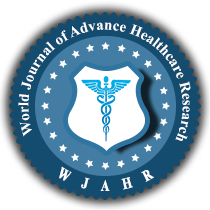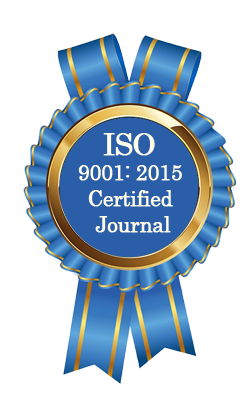| All | Since 2020 | |
| Citation | 105 | 60 |
| h-index | 4 | 4 |
| i10-index | 3 | 2 |
WJAHR Citation 
Login
News & Updation
Best Article Awards
World Journal of Advance Healthcare Research (WJAHR) is giving Best Article Award in every Issue for Best Article and Issue Certificate of Appreciation to the Authors to promote research activity of scholar.
Best Article of current issue
Download Article : Click here
Indexing
Abstract
CROSSED VERSUS LATERAL PERCUTANEOUS PINNING FOR TREATMENT OF DISPLACED PEDIATRIC SUPRACONDYLAR HUMERAL FRACTURES BY CLOSED REDUCTION AND PERCUTANEOUS PINNING
Rabah Abdulla AL- Ebadi, F.I.C.M.S (Ortho)*, Dr. Nashwan Abdil-khalik Thannon, M.B.Ch.B Yasir Isam Mohammed and Dr. Firas Abdul Kareem Sabri Al Iblesh
ABSTRACT
Background: Supracondylar humeral fractures are the most common elbow injuries in pediatric population. Their treatment is controversial when displacement has occurred whether open or closed reduction. closed reduction with percutaneous pinning using either two lateral pins or crossed pinning. Objective: The aim of this is to compare the functional, cosmetic and radiological outcome between lateral & crossed pinning method for percutaneous fixation of displaced type II and III supracondylar humeral fractures in pediatric patients. Patients and Methods: A prospective comparative randomized study of 50 patients 34 (68%) male & 16 (32%) female with displaced type II & III supracondylar humeral fracture in patients below 10 years (mean age 6.74 years) this study was conducted at Al-Jumhoori Teaching Hospitals in Mosul from January 2020 to October 2020. All patients were treated surgically by closed reduction and percutaneous pinning using either lateral pinning (group A 25 patients) or crossed pinning (group B 25 patients). The mean follow up was 3months. Results: Forty three (86%) of patients had minimal loss of Baumann angle (21 (84%) patients in group A & 22 (88%) patients in group B) according Skaggs criteria. Forty five (90%) of patients had excellent cosmetic outcome (22 (88%) patients in group A & 23 (92%) patients in group B). Thirty three (66%) of patients had excellent functional outcome (17 (68%) patients in group A & 16 (64%) patients in group B) according to Flynn criteria. Surgical time in group A was (37.04±1.76 minutes) while in group B was (39.36±2.39 minutes). One (4%) patient in group A & three (12%) patients in group B had pin tract infection. Two (8%) cases of iatrogenic ulnar nerve injury were found in group B which recovered completely after 4 weeks. No statistically significant difference were found between two groups except for surgical time (P-value0.0003). Conclusions: Both methods were good and relatively safe for fixation of displaced supracondylar humeral fracture. No statistically difference regarding functional, cosmetic and radiological outcomes, however, the surgical time in group A was shorter than group B and iatrogenic ulnar nerve injury still encountered in group B.
[Full Text Article] [Download Certificate]
